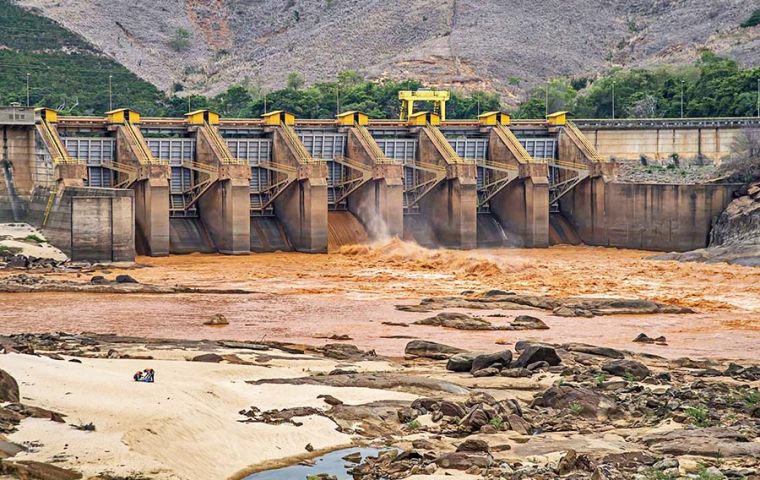MercoPress. South Atlantic News Agency
Brazil's mining industry given more time to close dangerous tailings dams
 The country’s National Mining Agency (ANM) had in February banned construction of new upstream dams in response to the Brumadinho tragedy
The country’s National Mining Agency (ANM) had in February banned construction of new upstream dams in response to the Brumadinho tragedy Brazil’s mining regulator on Monday extended the deadlines by up to four years for the closing of many dangerous mine tailings dams like the one that collapsed in January at a Vale SA facility, killing more than 240 people.
Tailings are the muddy waste produced in mining for iron ore and other minerals. The waste is often contained within a dam built using a variety of methods.
The so-called upstream type of dam is considered the most dangerous as is most susceptible to liquid seeping under the dam and weakening the structure, which authorities believe is what happened in the January disaster in the town of Brumadinho.
The country’s National Mining Agency (ANM) had in February banned construction of new upstream dams in response to the tragedy. It had also called for such structures still in use to be deactivated by 2021 and fully closed down by 2023.
But under a new regulation published in the government’s official gazette on Monday, the larger upstream dams will now have until 2025 or 2027 to be completely shut down in a process known as “decharacterization”. Smaller dams had the deadline moved up to 2022.
All upstream dams in operation must still be deactivated in 2021, however, meaning no new tailings can be added to the dams.
“The practice of decommissioning and decharacterization of dams is new to the whole mining sector in Brazil,” said ANM director, Eduardo Leão, in an emailed statement.
He added the decision to push back the deadlines takes into account that rushing the process could lead to another disaster.
Vale, in turn, reiterated its commitment to completely eliminate nine remaining upstream dams that have already been deactivated.
The company said it aims in the next three years to either decommission the dams or bring them to a condition where they offer no risk to people or the environment.




Top Comments
Disclaimer & comment rulesCommenting for this story is now closed.
If you have a Facebook account, become a fan and comment on our Facebook Page!